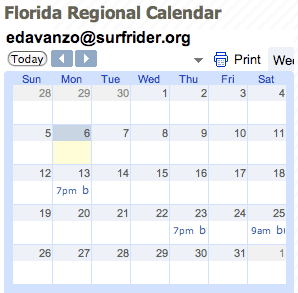While this is a CA article it can apply to Florida..
PALO ALTO – California Sea Grant researchers have strong evidence that septic tanks in Northern California are leaking nitrogen and phosphate into coastal waters that can trigger algal blooms. Reporting in the journal Limnology and Oceanography, they report finding elevated levels of these “nutrients” in the surf zone during periods of high groundwater flows to the beach.
Following one of these freshwater pulses, they observed a four-day elevation in chlorophyll-a levels – a proxy for phytoplankton concentrations. Though it is extremely difficult to attribute any single algal bloom to the presence of higher than normal nutrient levels, the general link between nutrification and algal blooms is widely recognized for both marine and freshwater ecosystems.
“Our project is one of the first in California to show definitively that septic tanks can affect coastal water quality through submarine groundwater discharge,” says Alexandria Boehm, a professor in the Department of Civil and Environmental Engineering at Stanford University.
Most research on septic systems has focused on their effects on terrestrial ecosystems, Boehm explains. The value of this project is that it shows they can also impact marine ecosystems via polluted groundwater discharging directly to the ocean.
In theory, the nutrient spikes detected in Northern California could have come from polluted creeks or runoff. This, however, is not what the scientists believe is happening because their fieldwork was conducted in summertime when, they say, groundwater is the only source of freshwater to the coast.
Fertilizers spread on lawns and crops could also potentially be sources of the nutrients they detected. Again, however, scientists rule out this possibility because of the concomitantly high levels of human fecal indicator bacteria detected in groundwater samples collected between the septic systems and shoreline. Interestingly, bacteria counts in beach water samples did not rise and fall with changes in groundwater fluxes, suggesting the beach aquifer removes pathogens, says Stanford doctoral student, Nicholas de Sieyes, the lead author of the journal article. “Some of our current research is focusing on this point.” From a scientific perspective, the researchers were not surprised to find a link between septic systems and beach water quality. “It is what we expected,” Boehm says.
The unanticipated discovery was the way in which tidal cycles modulate freshwater fluxes to the coast. Indeed, their prediction was that fresh groundwater flows would peak during spring tides, when the tidal forces of the Sun and Moon reinforce each other. Instead, the greatest pulses of exiting groundwater occurred during neap tides, when weak tidal forcing results in minimal differences between high and low tides.
In particular, they measured a fresh groundwater discharge rate of 1.2 to 4.7 liters per minute per meter during neap tides, compared with .1 to .5 liters per minute per meter during spring tides. During neap tides, nitrogen levels rose 35 percent, phosphate levels 27 percent and silicate levels 14 percent, as compared with spring tide measurements. Their technical explanation for the pattern is outlined in detail in their peer-reviewed work. The gist of it is that ocean water fills the beach aquifer during high spring tides, creating a sort of hydraulic mound in front of fresh groundwater. During low tides, all of this saltwater must drain back to sea before fresh groundwater can begin to exit. During neap tides, the absence of a formidable hydraulic mound results in a greater release of fresh groundwater to the beach during low tide, hence their results.
All of the fieldwork, which will continue into the summer of 2009, was conducted at Stinson Beach in Marin County because of the community’s interest in protecting its beach water quality.
“We don’t think our findings are unique to Stinson Beach,” de Sieyes says, noting that septic systems are common along coastal counties north of San Francisco, as well as in more densely populated areas such as Morro Bay, Malibu, Rincon and Los Osos.
In recognition of the potential environmental implications for beach, ocean and river ecosystems, the California legislature has directed the State Water Resources Control Board to establish regulations on septic systems. California and Michigan are the nation’s only two states without statewide regulations on septic systems.
Critics of the proposed changes cite a lack of data showing septic systems contribute to actual water-quality problems. “I think it’s really important for people to know that we’ve quantified the impact of septic systems on the coastal ocean at one location, that there were documentable effects on groundwater and coastal water quality and that, in general, on-site wastewater treatment is indeed an important environmental concern and may require additional regulatory attention,” de Sieyes wrote in an email exchange.
http://www-csgc.ucsd.edu/newsroom/newsreleases/2009/coastalwaterquality.html
Contact: Christina S. Johnson, csjohnson@ucsd.edu, 858-822-5334
Tuesday, March 17
Monday, March 9
Surf Economics of Brevard County
Check out the recent update to Surfrider's Surf Economics Blog that focuses on Brevard County. Over 240 surfers were surveyed!
http://surfeconomics.blogspot.com/2009/03/surfonomics-of-brevard-county-florida.html
http://surfeconomics.blogspot.com/2009/03/surfonomics-of-brevard-county-florida.html
Subscribe to:
Comments (Atom)




